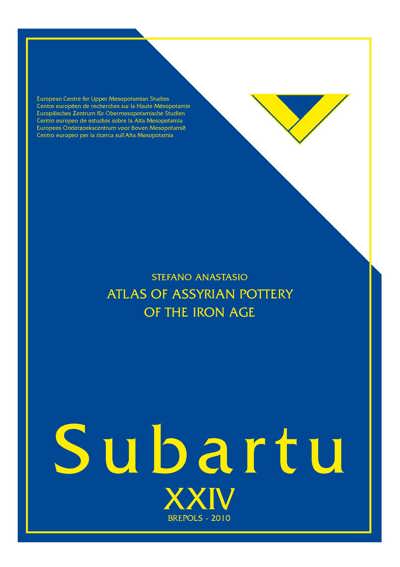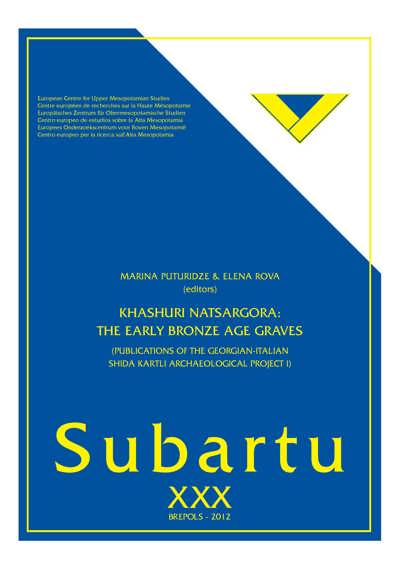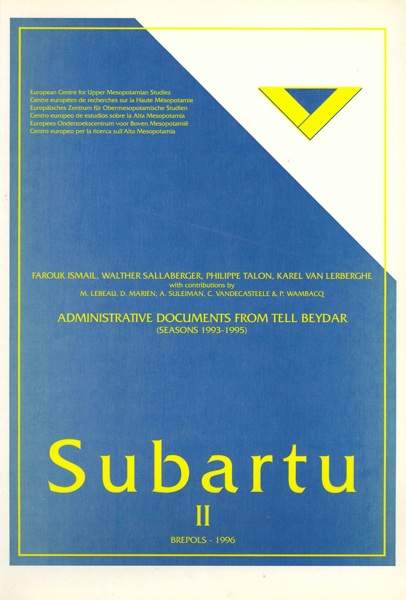
Violence & Imagination after the Collapse
Encounters, Identity & Daily Life in the Upper Euphrates Region, 3200-2500 BCE
Akiva Sanders
- Pages: xviii + 306 p.
- Size:216 x 280 mm
- Illustrations:210 b/w, 8 col., 12 tables b/w., 5 maps b/w
- Language(s):English
- Publication Year:2024
- € 130,00 EXCL. VAT RETAIL PRICE
- ISBN: 978-2-503-60945-4
- Paperback
- Available
- € 130,00 EXCL. VAT RETAIL PRICE
- ISBN: 978-2-503-60946-1
- E-book
- Available
An investigation into the visual and social choices made by residents of the Upper Euphrates region, ca. 3200-2500 BCE. The villages of this region were situated between the Upper Mesopotamian and the Kura-Araxes cultural traditions, whose deep differences in social organization strike at the heart of what it means to be a human community.
Akiva Sanders is an archaeologist and art historian who tries to understand the past through the varied experiences and attempts at self-expression of those who inhabited it. His research focuses on the assembly and disassembly of monumental central institutions in Mesopotamia: the changes in daily life, sources of meaning, and interpersonal relationships that accompanied these pivotal moments, methods of resistance to institutional authority, and the creative aftermath of institutional collapse. He approaches these questions with evidence from settlement archaeology, art history, population genetics, and ancient fingerprints. Since he received his PhD from the University of Chicago in 2021, Dr. Sanders has held appointments at the American Research Institute in Turkey, Tel Aviv University, New York University, and the Pratt Institute.
In the late fourth millennium BCE, the villages, temples, and palace of the Upper Euphrates region stood between two social worlds: the comparatively hierarchical, centrally organized Mesopotamian social tradition to the south and the comparatively egalitarian, decentralized Kura-Araxes social tradition to the north. Over the next seven centuries, this positioning and the interactions it sparked fed into reactions among the region’s inhabitants that ranged from cataclysmic violence to a flowering of innovation in visual culture and social arrangements. These events had a wide array of short-term and long-term impacts, some limited to a single house or settlement, and some, like the innovation of the Warrior Tomb template, that transformed societies across West Asia. With an eye towards detail, a theoretical approach emphasizing personal motivation, and multiple scales of analysis, this book organizes previously unpublished data from six sites in the region, Arslantepe, Ta kun Mevkii, Pulur, Nor untepe, Tepecik, and Korucutepe, dating to this dramatic and transformative period.
List of Illustrations
Acknowledgements
Introduction
Chapter 1. Identities under Construction at the Margins
The Problem: Late Chalcolithic Mesopotamia and the Kura-Araxes Cultural Tradition at the End of the Fourth Millennium
An Approach to Culture Contact
Methodologies for New Research
Chapter 2. Setting the Stage: The Late Chalcolithic Background
The Local Late Chalcolithic of the Upper Euphrates in Regional Context
The Kura-Araxes Cultural Tradition
A Comparison of Upper Euphrates LC and Kura-Araxes Visual Culture Signatures
Conclusion
Chapter 3. The First Moments of Visible Contact: The EB Ia Period
Arslantepe
Tepecik
Conclusions: The Formation of a New Kura-Araxes(-Inspired) Visual Orthodoxy
Chapter 4. Isolated Citadels: The EB Ib Period
Norşuntepe
Tepecik
Arslantepe
Taşkun Mevkii
Conclusions: The Creation of an Indigenous Visual Counter-Orthodoxy
Chapter 5. Accommodation, Innovation, and Diversity: The EB II Period
Norşuntepe
Tepecik
Korucutepe
Pulur
Arslantepe
Conclusions: Innovation and Blending of Visual Templates in a Borderland Region
Chapter 6. Legacies of Interactions and Innovations on the Upper Euphrates
Legacies of EB I Occupations
Legacies of EB II Occupations
Conclusions. Evidence, Theory, and Narrative
The Nature of Kura-Araxes Identity in the Upper Euphrates Region
Violence, Power, and Symbolic Systems
Works Cited
Appendix 1. Plan Key
Detailed Descriptions of Object Types
Appendix 2. Object Registers
Norşuntepe
Tepecik
Korucutepe
Arslantepe
Taşkun Mevkii
Objects




